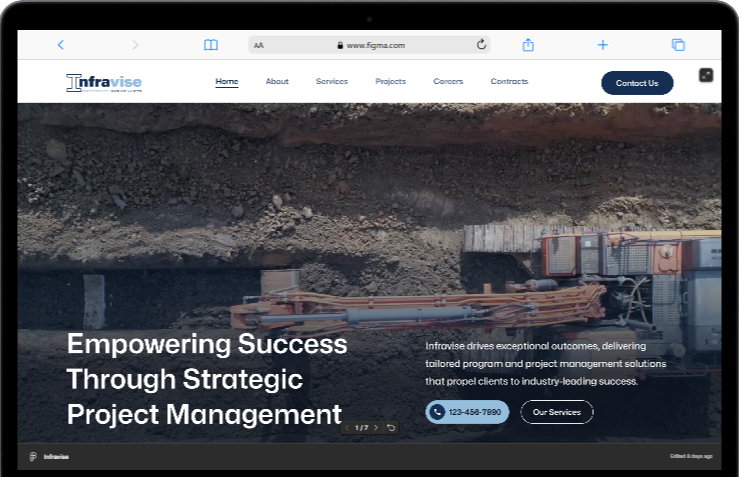Introduction
Content management systems (CMS) have evolved rapidly, and headless CMS is gaining momentum as the go-to solution for developers, businesses, and marketers. As we enter 2025, the demand for flexible, scalable, and omnichannel content delivery is higher than ever.
But what exactly is a headless CMS, and why is it the future of content management? In this guide, we’ll explore its benefits, challenges, best platforms, real-world case studies, implementation strategies, future trends, and a step-by-step roadmap for adoption.
1. What is a Headless CMS?
A headless CMS is a backend content management system that delivers content via APIs, allowing developers to display it on any digital platform—websites, mobile apps, smart devices, or even virtual reality (VR) environments.
Unlike traditional CMS (e.g., WordPress, Joomla) that tightly integrate the front-end and back-end, headless CMS separates content management from presentation, giving developers more control over how content is displayed.
🔍 Key Difference:
- Traditional CMS = Backend + Frontend (Tightly Coupled)
- Headless CMS = Backend (Content Storage) + API (Content Delivery)
2. Why is Headless CMS Gaining Popularity?
The shift towards headless CMS is driven by the need for faster, omnichannel content distribution and better scalability. Some of the key reasons why businesses are adopting headless CMS include:
✅ Omnichannel Content Delivery – Publish once, distribute everywhere (web, mobile, IoT, voice assistants, etc.)
✅ Better Performance & Speed – Faster load times and better SEO performance compared to traditional CMS
✅ Developer Flexibility – Use modern frontend frameworks (React, Vue.js, Angular) to build custom experiences
✅ Scalability – Easily scale content across multiple platforms without redesigning the entire CMS
✅ Enhanced Security – Reduced attack surface as the CMS is not directly exposed to the public
3. How Does a Headless CMS Work?
A headless CMS stores content in a database and makes it available through APIs (usually RESTful or GraphQL). This means developers can retrieve content and display it anywhere, using any technology.
🔧 How It Works:
- Content Creation – Writers/editors add content to the CMS backend.
- API Requests – The frontend (website, app) requests content from the CMS via an API.
- Content Rendering – The frontend uses frameworks like Next.js, Nuxt.js, or Svelte to render the content.
4. Popular Headless CMS Platforms in 2025
With headless CMS adoption on the rise, several platforms dominate the market in 2025:
🚀 Best Headless CMS Solutions:
- Strapi – Open-source, highly customizable
- Contentful – Enterprise-level, API-first
- Sanity.io – Real-time collaboration and flexibility
- Ghost (Headless Mode) – Ideal for blogging and media websites
- GraphCMS – GraphQL-powered CMS with strong performance
5. Challenges of Using a Headless CMS
While headless CMS offers many advantages, it’s not without challenges:
❌ Requires Development Skills – Unlike traditional CMS platforms, headless CMS requires developers to build the frontend.
❌ Higher Initial Setup Costs – Setting up APIs and frontend frameworks can be more time-consuming.
❌ No Built-in Themes – Unlike WordPress, there are no pre-built themes or drag-and-drop editors.
6. Case Studies: How Businesses are Using Headless CMS in 2025
📌 Case Study 1: E-Commerce Platform Scaling with Headless CMS
A leading online retailer transitioned from WordPress to a headless CMS to enable omnichannel sales. Results included:
- 50% faster website load time
- Seamless mobile and desktop content synchronization
- Integration with AI-powered product recommendations
📌 Case Study 2: Media Company Streamlining Content Distribution
A digital media company adopted headless CMS to distribute articles, videos, and podcasts across multiple platforms. Key benefits:
- Increased content engagement by 40%
- Faster content publishing workflows
- Enhanced personalization through API-driven content delivery
7. Step-by-Step Guide to Implementing a Headless CMS
1️⃣ Choose the Right Platform – Select a headless CMS that suits your needs (e.g., Strapi for developers, Contentful for enterprises).
2️⃣ Define Your Content Structure – Plan how content will be stored and retrieved via APIs.
3️⃣ Develop the Frontend – Use frameworks like React, Vue.js, or Angular to create a user-friendly frontend.
4️⃣ Set Up API Integrations – Connect the headless CMS with other platforms, including CRMs, e-commerce tools, and analytics systems.
5️⃣ Optimize for Performance – Ensure fast content delivery with caching, CDN integration, and lazy loading.
6️⃣ Secure Your CMS – Implement security best practices such as authentication, access control, and data encryption.
8. Future Trends in Headless CMS for 2025 and Beyond
🔮 AI-Driven Content Management – Expect AI-powered content creation, personalization, and automation.
🔮 Voice Search Optimization – Headless CMS will support voice-first platforms like Alexa, Google Assistant, and Siri.
🔮 Blockchain-Based CMS – Decentralized content storage for enhanced security and transparency.
🔮 Edge Computing Integration – Faster content delivery through distributed data processing.
Final Thoughts
The future of content management is headless, API-driven, and highly flexible. As businesses move towards omnichannel strategies, headless CMS solutions provide better scalability, performance, and content distribution.
Are you ready to adopt a headless CMS in 2025? Ali DevSolutions can help you build a powerful, future-proof content strategy with the best headless CMS solutions tailored to your needs.





